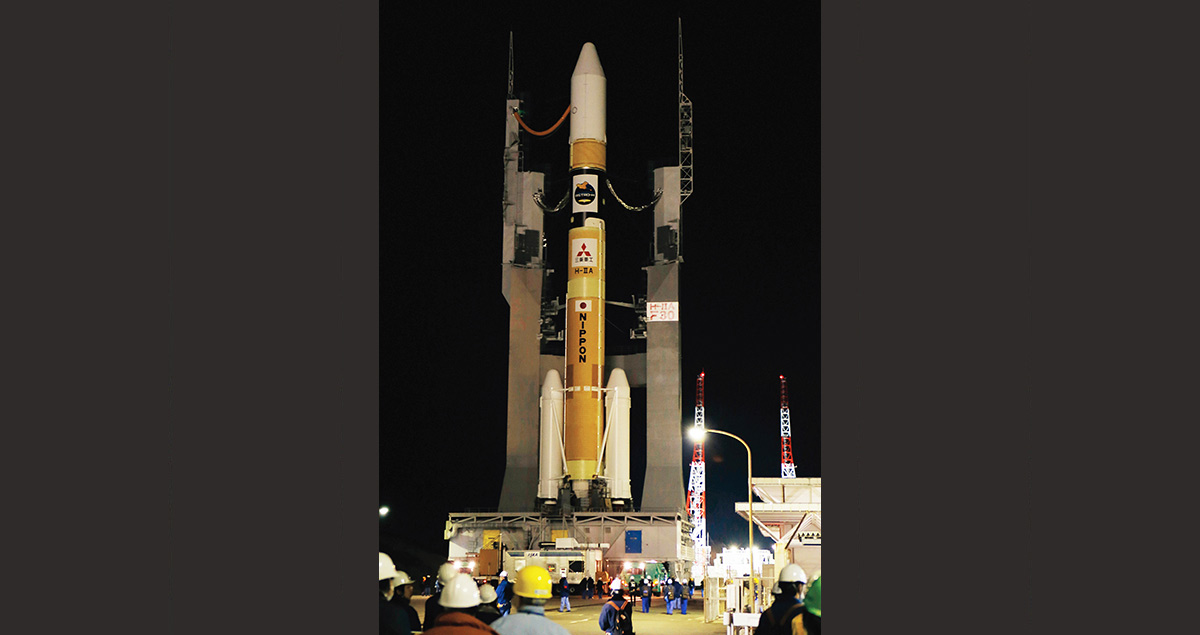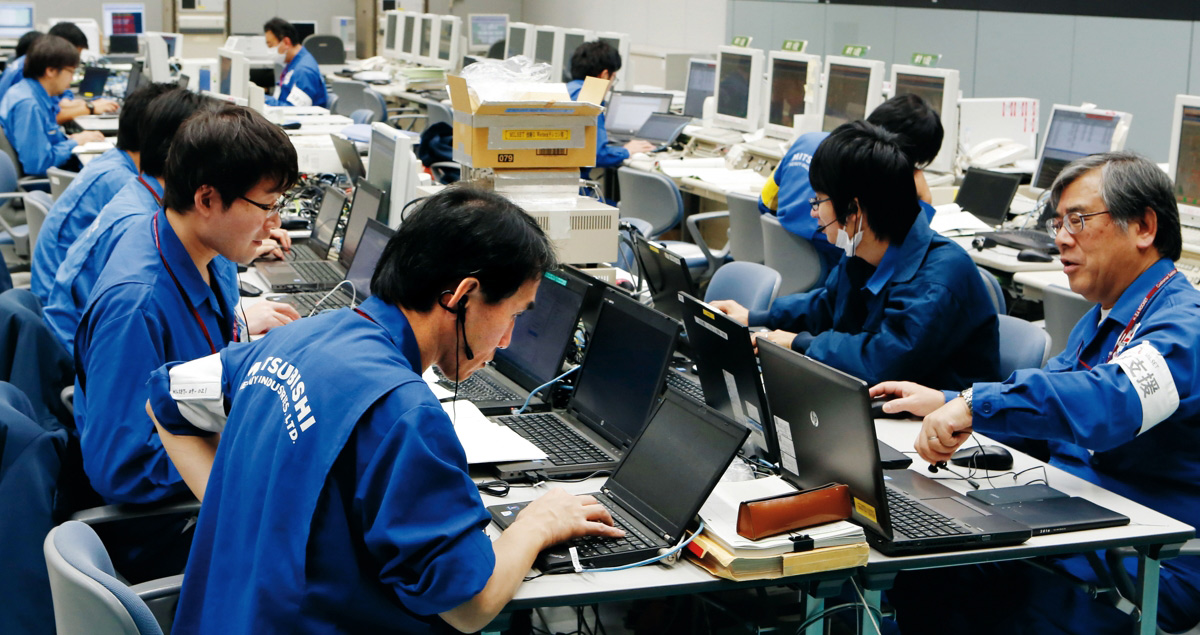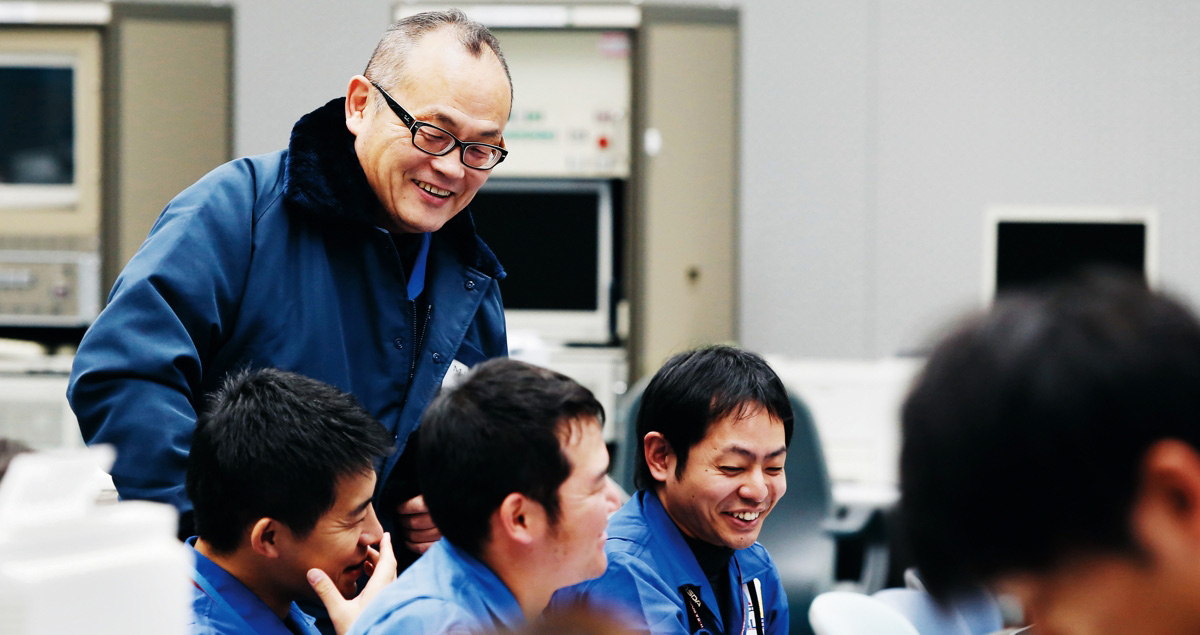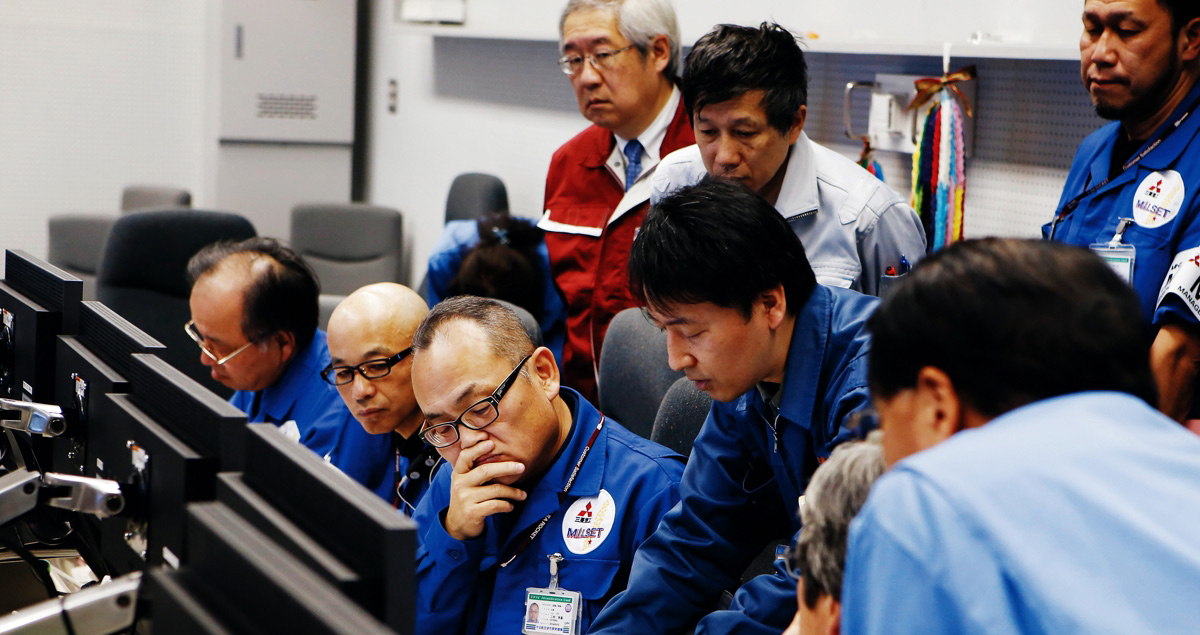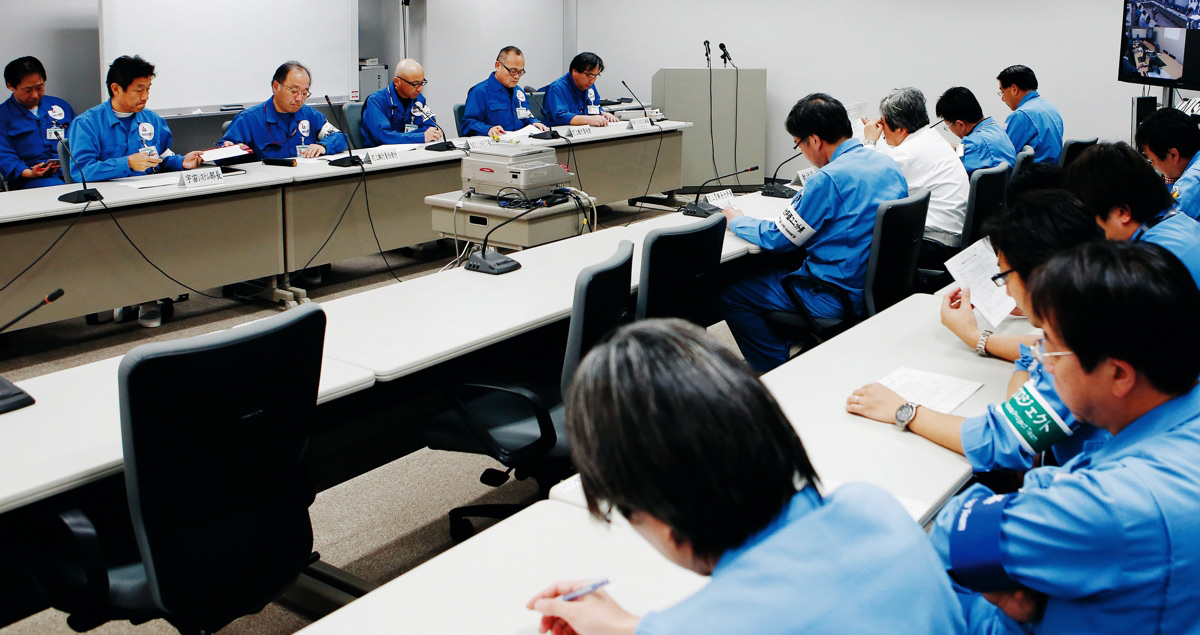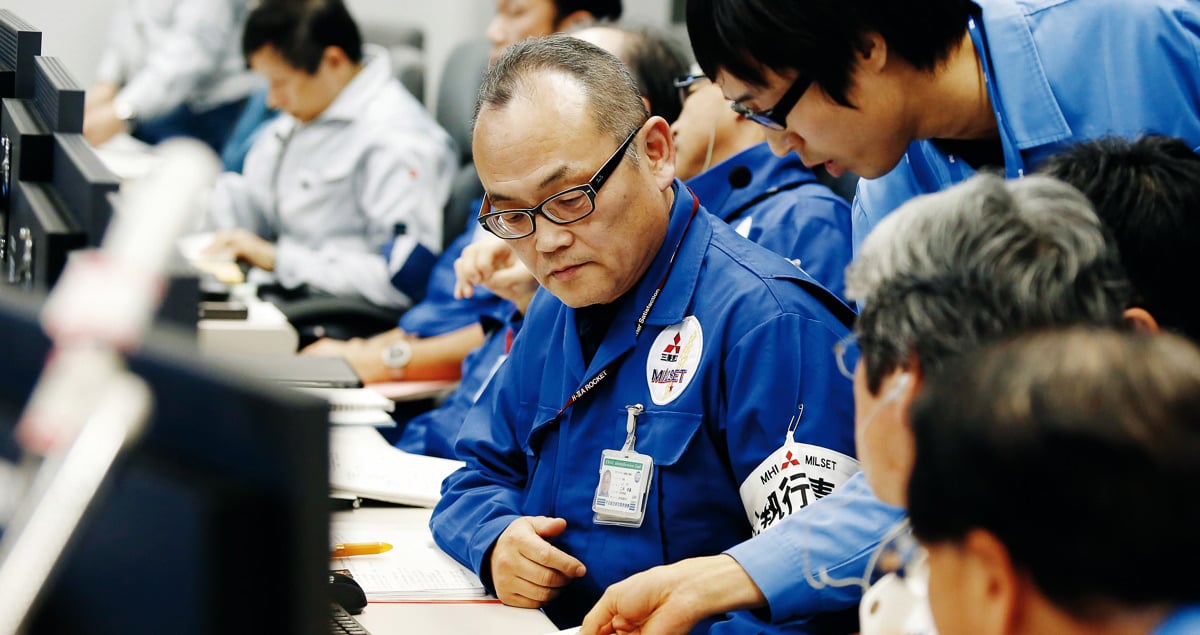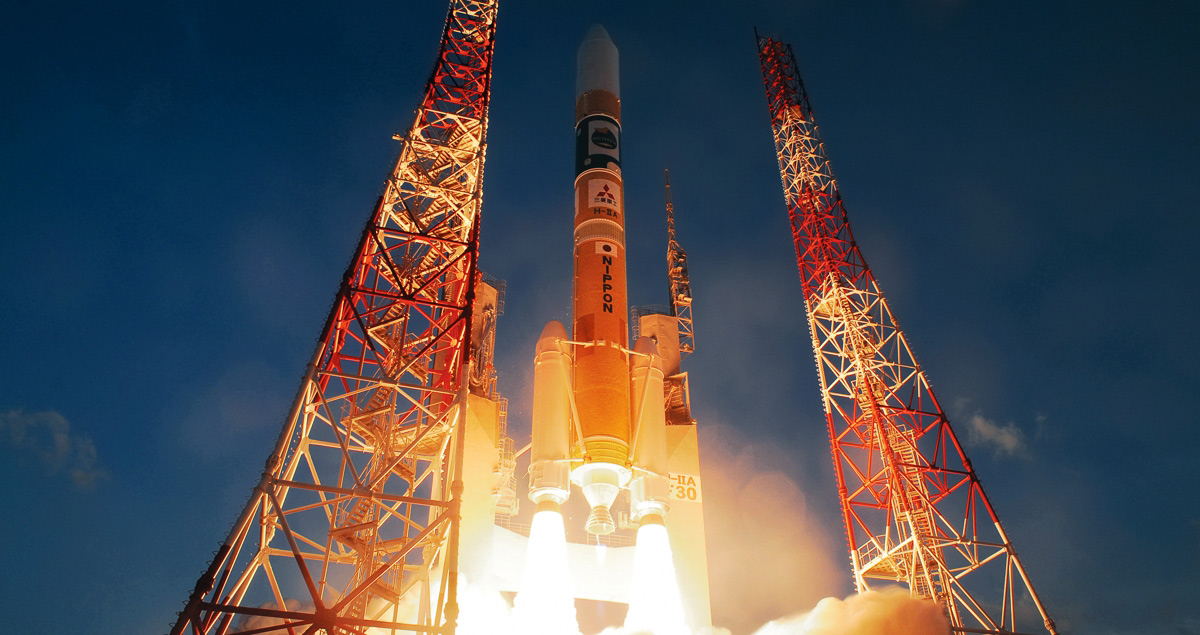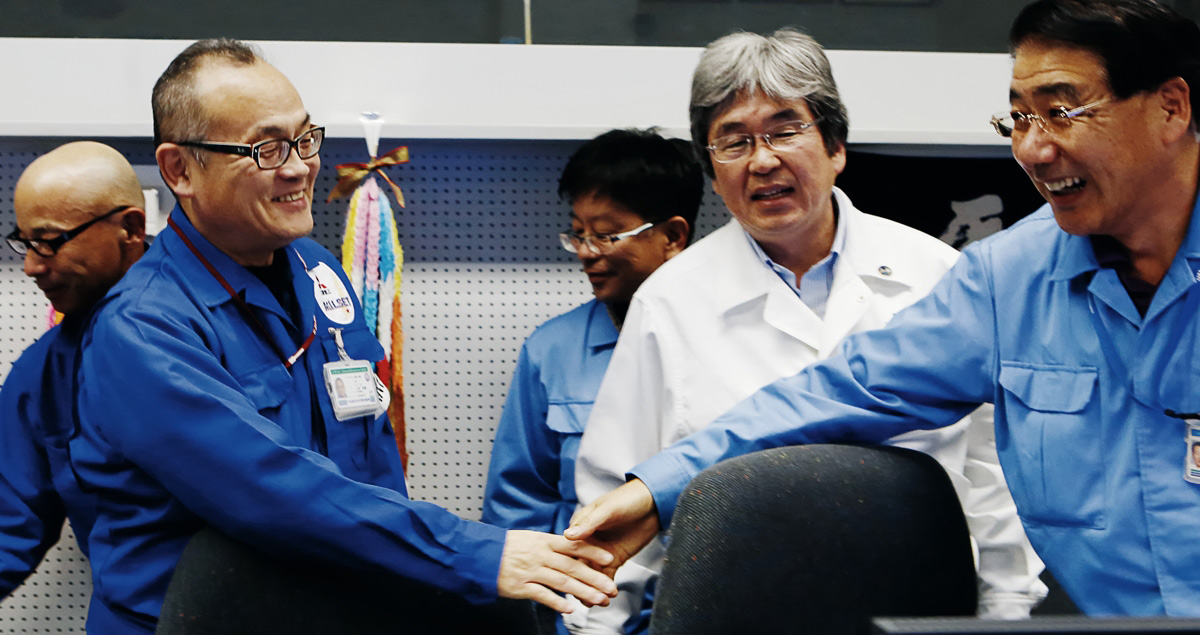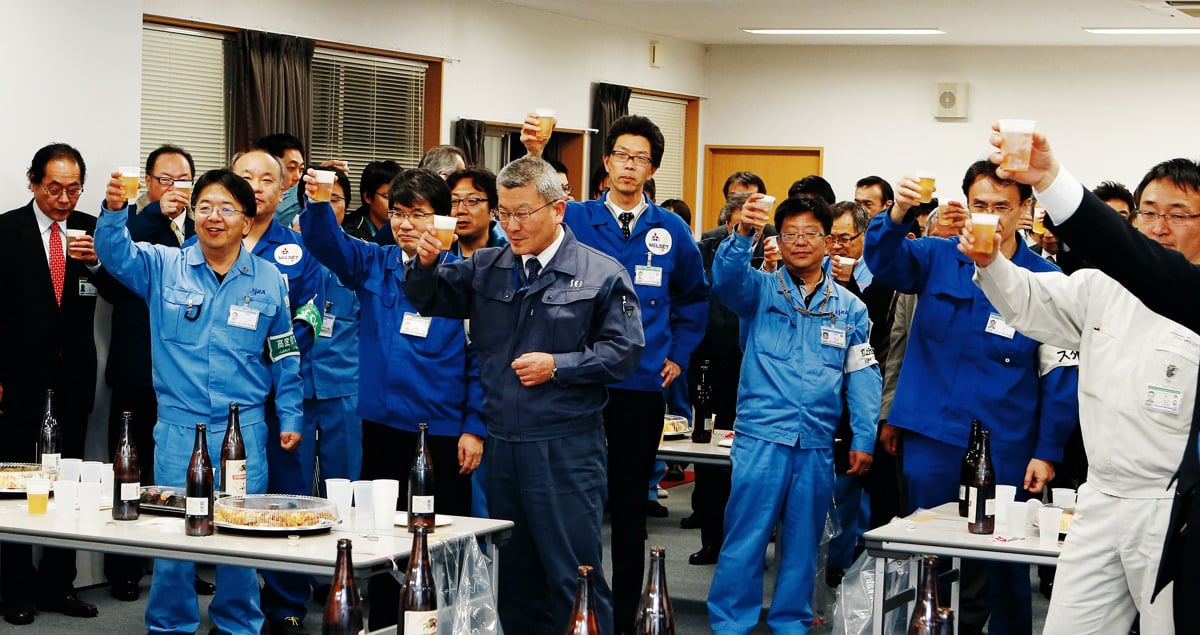To the stars and beyond
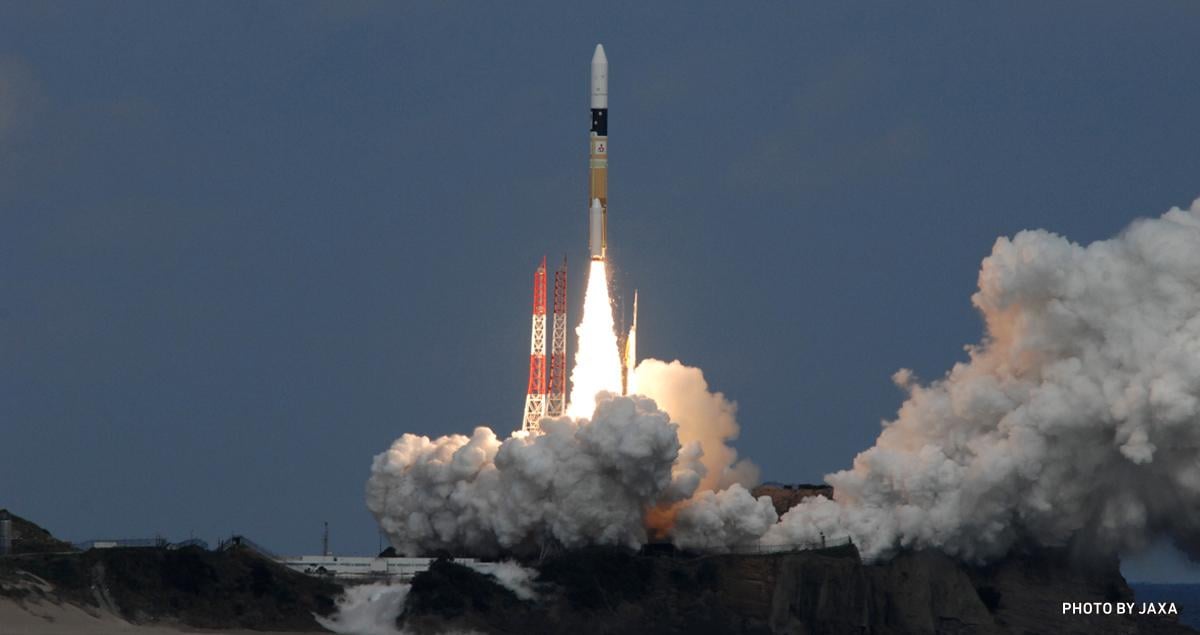
Index
Early on a rainy February morning, on the seaside launch pad of a remote Japanese island, Mitsubishi H-IIA rocket No. 30 is awaiting its rendezvous with destiny. Once successfully placed into orbit, a satellite began its mission in space while far below the rocket launch team celebrated yet another in a growing list of successful launches.
“No matter how often I witness our launches, I always get very nervous at the moment of the launch, but the sheer pleasure of success is always immense,” said Hisakazu Mizutani, head of Integrated Defense & Space Systems at MHI, Mitsubishi Heavy Industries.
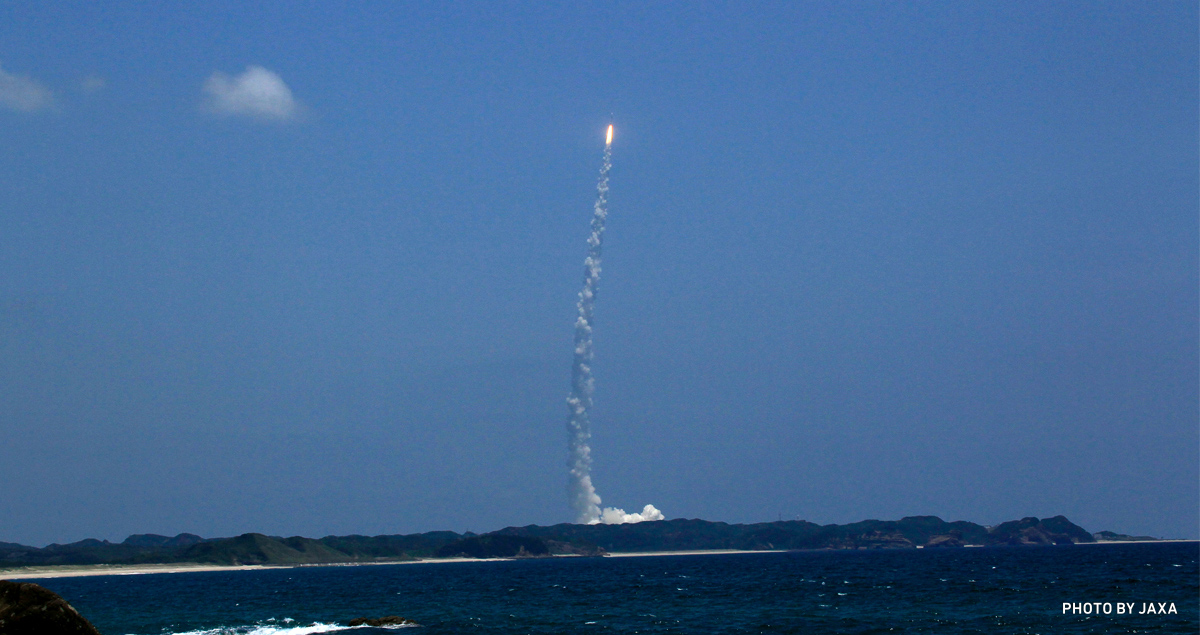
Mission: Success
Successful lift-off occurred at 5:45 p.m. on February 17. One man who contributed to the achievement is Koki Nimura, who back in 2003 was project manager on the development of the H-IIA launch vehicle, and today serves as launch chief executive.
Although Nimura joined in the post-launch celebrations and shared in the moment of satisfaction of a great achievement, he never takes for granted what is required to achieve a successful launch, nor how it feels when one occurs. ”In 2003, I experienced the failure of the sixth launch of the H-IIA, then fifteen months of the most difficult time in my life finding out what went wrong and preparing for the next launch,” he said. “I was truly overwhelmed when we successfully launched the seventh.”
Nimura believes a big part of the overall success rate is due to the power of positive thinking. “Especially amid the extreme tension when a launch is eminent, I always keep any negative emotions to myself. I have to take care when I feel extremely nervous or frustrated, because this is transmitted to others and there is nothing good about that,” he said.
“A launch is a one-shot game,” Nimura said. Unlike other MHI products, where refinements can be made behind the scenes after release, the H-IIA rocket, which launches into orbit man-made satellites for the needs of the nation and commercial enterprises, and the H-IIB, which sends an automated cargo spacecraft aloft to resupply the International Space Station, wears success or failure on its sleeve.
Some launches draw national and even international attention, such as the 26th launch, of an asteroid explorer, the Hayabusa2. “Many reporters crowded the site, and the public was thrown into an uproar,” Nimura said. “However, our mission is to always make a launch a success no matter what the satellite is. Despite the upsurge in attention, we focused on doing the work as normal and thankfully were successful.”
